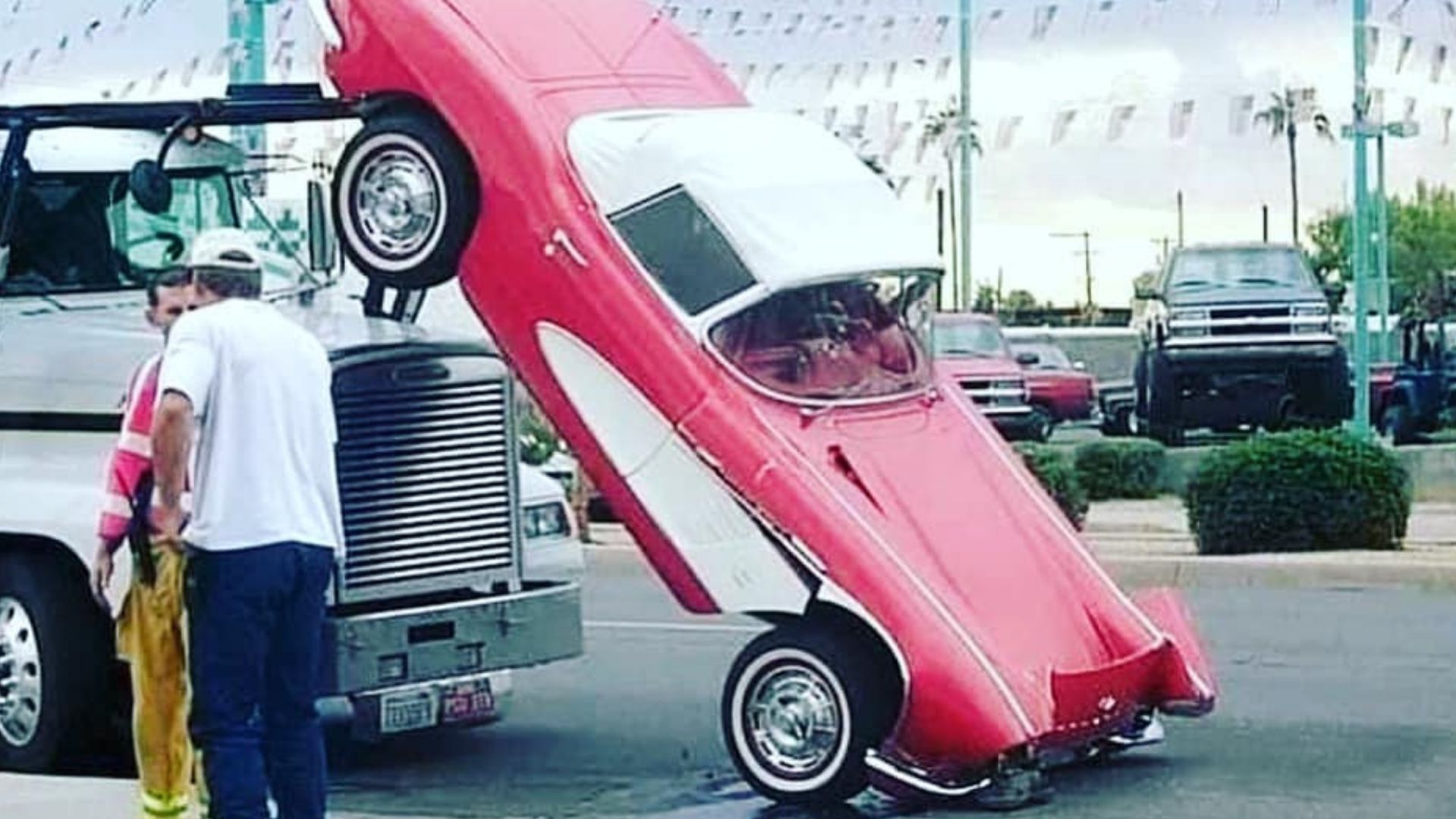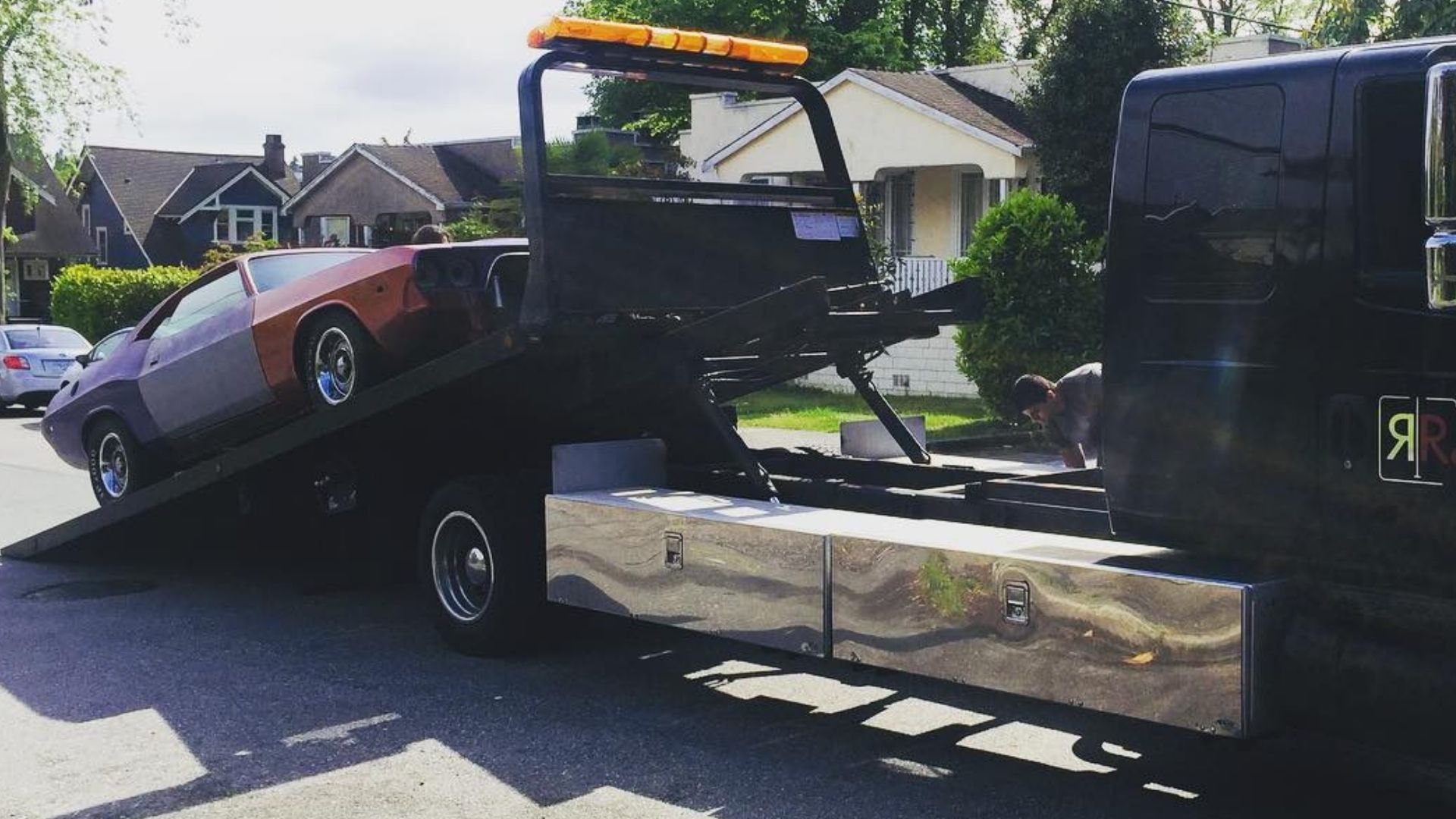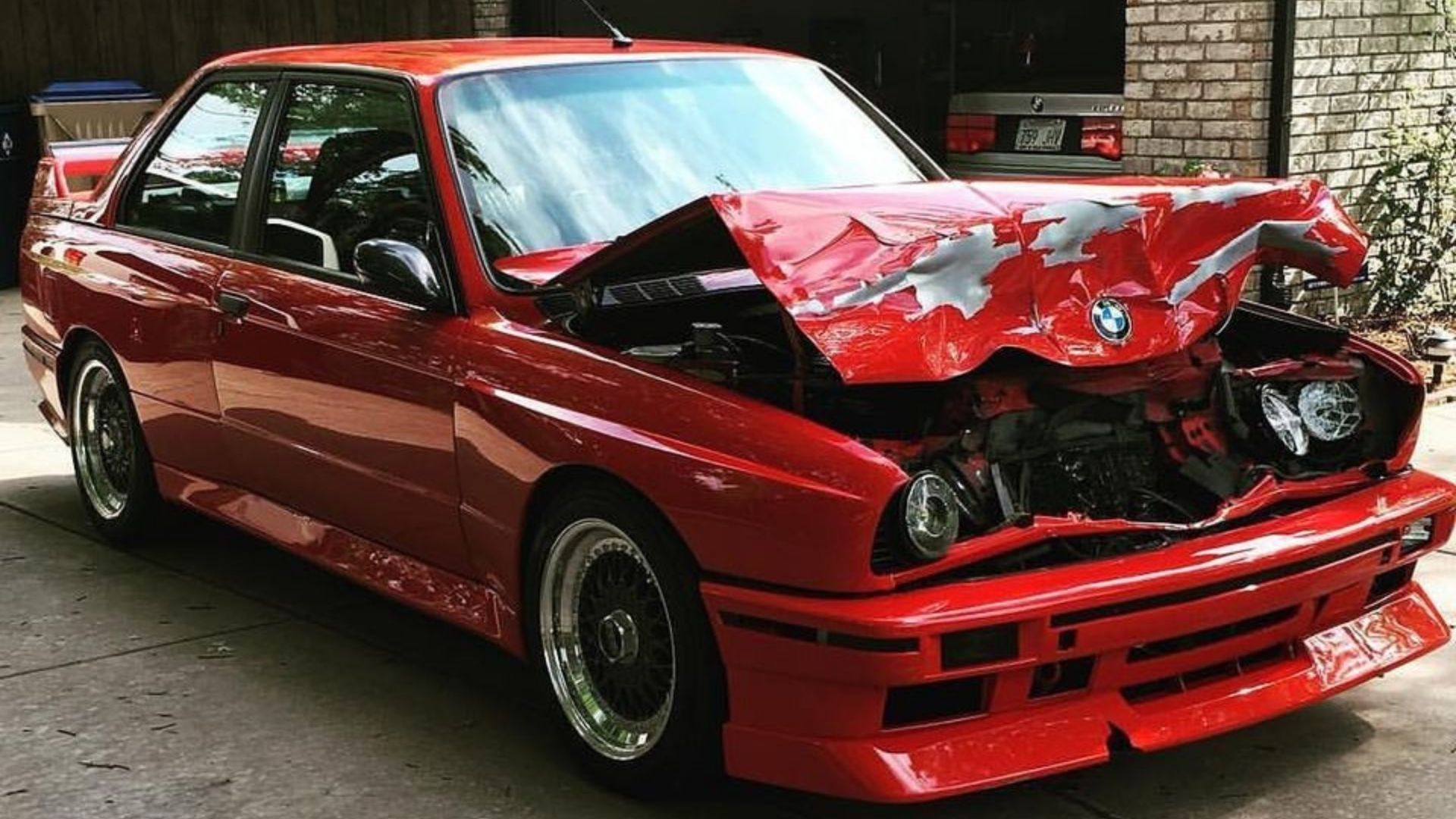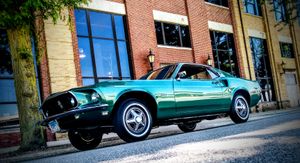The answer isn’t as easy as some people claim.
Whether you’ve been in an accident or your car has suffered a catastrophic mechanical failure, figuring out what to do with a damaged vehicle can be a huge headache. That’s especially true if you weren’t planning of ditching your ride anytime soon and you have people pressuring you to make the jump to something else.
Watch the latest Motorious Podcast here.

No matter if you decide to try selling or trading in your damaged car, the first step is to get it ready. Take out anything personal from the vehicle since that will help it show better, plus you might want that stuff. Fix anything you can on the cheap, like touching up small paint imperfections. Detail it fully, including polishing the body. You might consider having the carpets steam cleaned as well as the headliner and seats (if it has cloth upholstery).
Ultimately, you have to decide how far you’re willing to go on gussying up your ride. Just keep in mind that just like with a non-damaged car, the cleaner your ride is the better chance you stand of getting top dollar for it (for its condition, of course).
Selling a car on the open market can be a long, interesting adventure. Whenever dealing with the public you can interact with some odd people. Sadly, many will make an appointment to see your vehicle and then flake out. Others will act excited but never follow up. And if you’re selling a damaged car there will be others who will “kindly” offer to take it off your hands for next to nothing.

Every car has value, even if it’s not running, although a functioning vehicle is worth far more. Everyone knows that trading in a car to a dealer normally means not getting as much cash for it. There are some rare exceptions. At the same time, trading in a car means you get rid of it quickly and with relatively little hassle.
If the car is a collectible, you could consider consigning it with a dealer instead of trading it in, even if the vehicle doesn’t run. That’s a way to sell the car without haggling with strangers over its condition, plus you might get more money that way.
Sometimes car dealers are so desperate to make a sale they’ll give you an outstanding deal on a trade. This might even apply to cars that you basically have to push onto the lot. Just keep in mind that while you might get a high valuation for your trade, the dealer could be trying to make up for that on the final vehicle price or add-ons at closing (don’t forget your undercarriage coating, extended warranty, and door protectors).

Before you either sell or try trading in your damaged car, get the blue book value for it. We’d recommend looking at both Kelley and NADA if it’s a newer vehicle. There are several price guides out there for older or classic cars, so keep that in mind. You might also want to poke around and see what others are asking for the same year, make, and model, but keep in mind just because someone wants a certain amount doesn’t mean they’ll get it. Plus, if your car is damaged it will net even less on the market. Knowing about what your damaged car is worth is a critical step in deciding what offer you accept and what offer you pass on.
If you can’t find good information about your car’s value, you can always get help from a vehicle appraiser. Just like with every profession, there are good and bad appraisers, so always proceed with caution when exercising this option. Consider looking at reviews online or even better, ask friends and others for recommendations.





